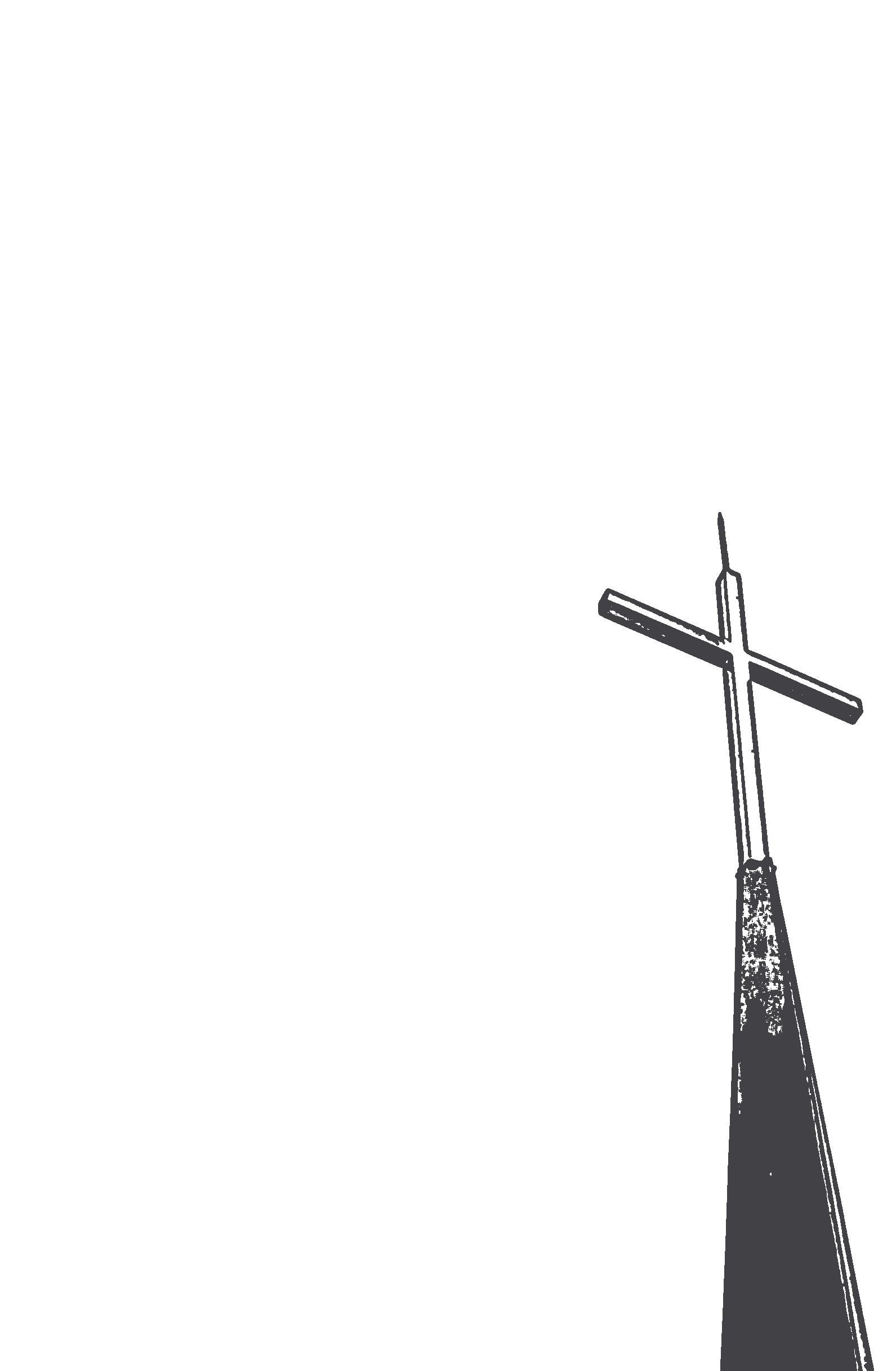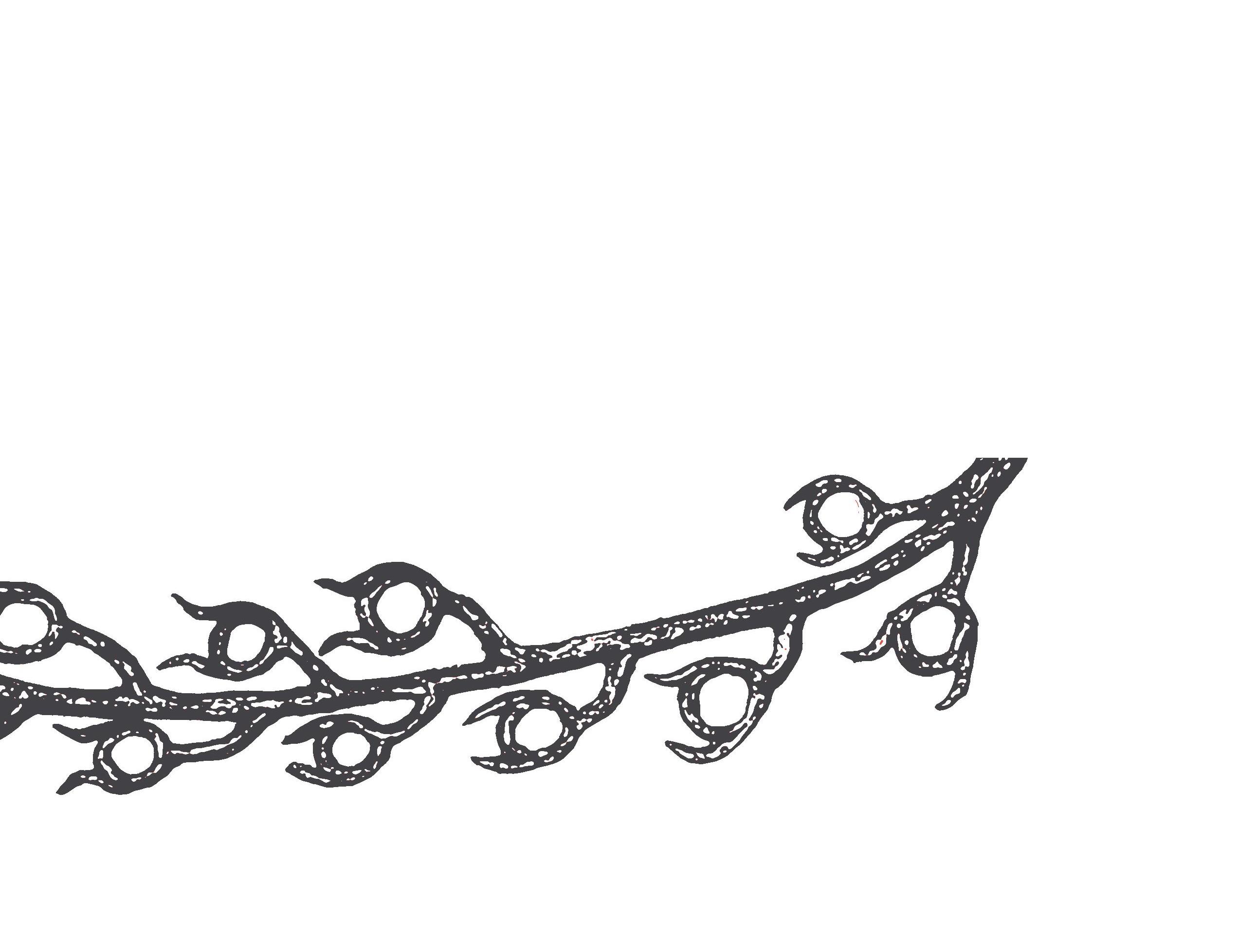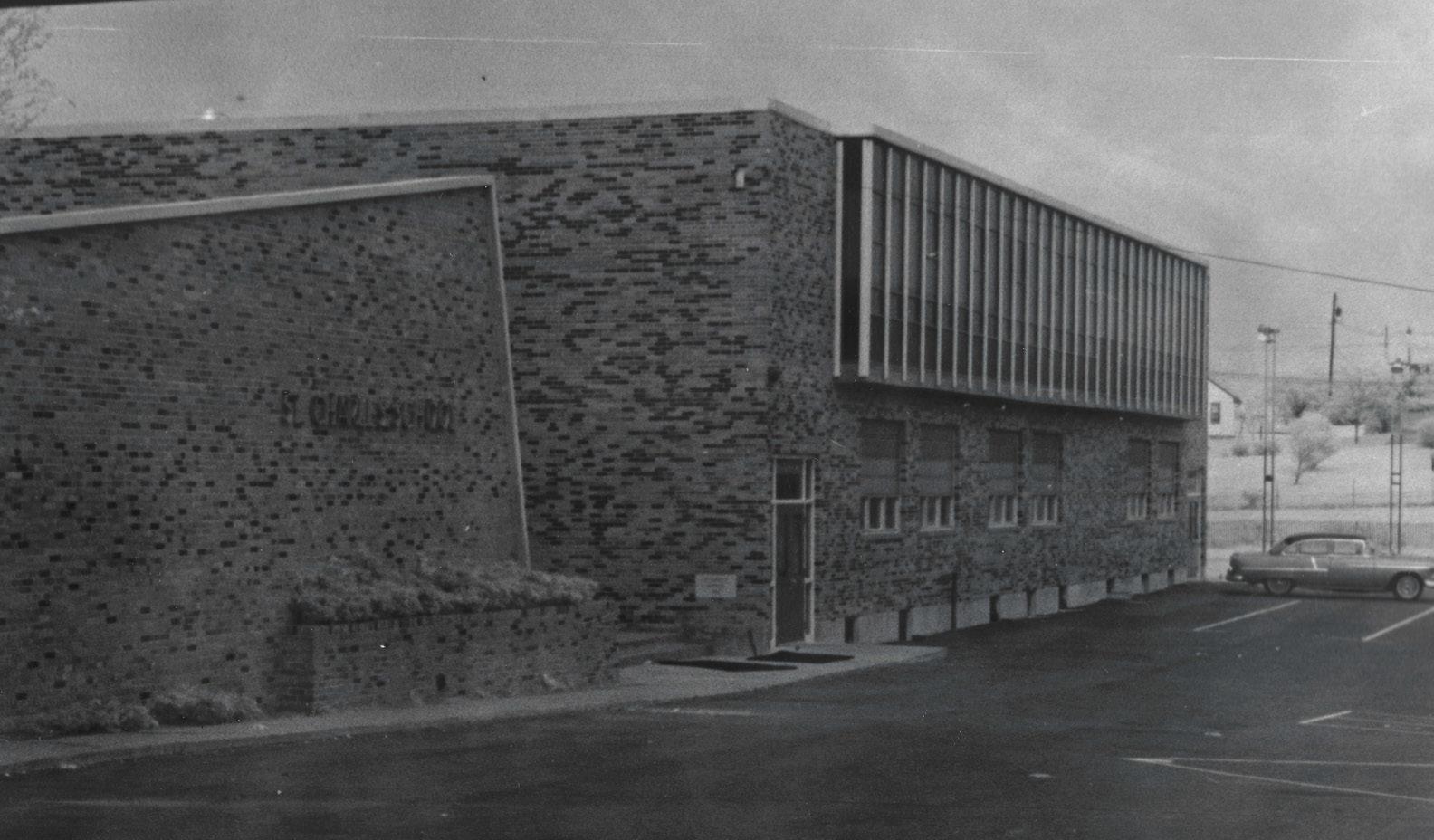
8 minute read
Chapter 2 :: 1963-1978
In the socially turbulent years of the 1960’s, Pope John XXIII announced that he was “opening the windows of the church to let in fresh air” (The History of the Diocese of Kansas City–Saint Joseph). He called the Second Vatican Council into session on October 11, 1962, and it remained open through 1965. Bishop Charles Helmsing was installed as bishop for the Diocese of Kansas City–Saint Joseph in January of 1962 and attended every session of Vatican II in Rome on behalf of the diocese.
Vatican II brought landmark changes to the mid-twentieth century Catholic church. Those most immediately noticeable to parishioners were changes to how the Mass was celebratedpriests facing the people, speaking in the vernacular languages rather than Latin. The Council voted overwhelmingly in favor of the language change on November 22, 1963 – the same day the first U.S. Catholic President, John F. Kennedy, was assassinated. Other significant changes included a renewed mandate to bring the good news of the Gospel to all corners of the world; a new ecumenical approach through interfaith cooperation with all religions; renewed commitment to RCIA and the diaconate; broadening the offering of the sacrament of anointing of the sick; encouraging establishment of a lay pastoral council to assist pastors in the governing and finance issues of the parish; and expanding the role of laity in worship and leadership. Bishop Helmsing returned from Rome ready to support pastors and parishes in the Diocese of Kansas City–Saint Joseph as they implemented the changes promulgated by the Second Vatican Council.
Advertisement
Father James Lyons, Innovator
In 1963, Father James Lyons became the second pastor of Saint Charles Borromeo parish and presided over the post-Vatican II era at Saint Charles Borromeo. He was a Doctor of Theology and capable educator who grew up in Cathedral Parish in Kansas City. Through his innovative approach and confident leadership, Saint Charles Borromeo became a leader among parishes in the diocese for implementing the concepts from the Second Vatican Council. On the first Sunday after Rome gave permission, Father Lyons presided facing the people in Mass, using a sacristy table as the altar. In 1964, the main altar was removed from the back wall. A new altar produced by the Giudici Brothers Marble Company was installed in the middle of the sanctuary. The architecture of the church now facilitated implementation of the liturgical reforms of Vatican II. This was the first of many innovations developed by Father Lyons, which included a focus on parishioner participation, education, women in leadership and ministry, marriage preparation, and counseling.

Parishioner Participation
Consistent with his belief that the parish belonged to the people, within a year of his arrival, 400 of the 900 families were actively involved in community life at Saint Charles. In 1965, he grouped parish families into 24 geographical areas with an area leader for each group and started having Mass in area homes. Early on he tapped into talented resources from the Northland business world, such as TWA and Farmland. He continued to build a structure of service with the Altar Society that included 20 circles, called parishioners to ongoing faith formation and adult education, and established the tradition of an annual Thanksgiving Mass with families standing with him in the sanctuary around the altar.


Building a strong infrastructure for the parish, involving many parishioners in leadership, and encouraging involvement in parish life were priorities for Father Lyons. He created four leadership teams, with each focused on one of the four key aspects of parish leadership: Management, Social Action, Spirituality, and Education. True to his philosophy, he empowered each team to plan its own programs. He also created a Parish Council whose membership included two elected members from each of the leadership teams as well as additional ex-officio members.
Management
The Management team included a finance committee (budgeting and future planning) and addressed issues as the church calendar, secretarial needs, and public relations issues. The parish had not employed an extensive pastoral staff, but in 1963, Rita Dickerson became the full-time secretary and administrator, a position she held until 1990. She had started at Saint Charles Borromeo as parttime secretary under Monsignor Wogan.
Social Action
The Social Action ministry included politics, ministry to the aged and sick, agreements which helped organize ways in which neighborhood clusters could become more aware and involved with inner-city parishes and ecumenism. Among the many programs established during this period, the “Our Bag” program was initiated at Saint Charles at Christmas 1972, designed to feed the poor through the holidays. This tradition continues in the parish today, celebrating its 50th anniversary in 2022.
Spirituality
The Spirituality Ministry team consisted of lay ministers, lectors, ushers, liturgists, sacristans, architecture, and the Christian Family Movement that consisted of couples who “observe, judge and act” for Christian growth.

Education
Education included the Saint Charles Borromeo School, School of Religion, adult education, and sacramental records, as well as innovative marriage preparation and marriage encounter programs. The School of Religious Education was founded to provide religious education for Catholic children attending public school. It was started in the 1967-68 school year. Attending the first meeting were Marilyn Sampson, Jeri Marcel, Mary Shanabarger, Emma Stirlen, Arlen Kullman, Betty Beyer, Art Pfaff, and Charlie Dickerson. In that first year, Rita Dickerson taught the pre-school course. By 1976, it was serving more than 600 students. It was professionally organized by Charles Dickerson with four divisions, each with a principal-in-charge of teachers. Joyce England and Sondra Pryor Keefe were among the early principals. Teachers were given a stipend, a practice unheard of at the time. Father Lyons would say later that religious education had an annual budget of $67 when he first arrived in 1963 and grew to $35,000 when he departed in 1978.
In 1959-60 Bishop Cody issued a directive that all Catholic children should attend Catholic school. This, combined with suburban growth, caused the Saint Charles school to flourish. In August 1963, the first School Board was established, elected from parish members plus a school guidance counselor, president, principal, and pastor. The first board members were John Cassidy, Rosemary Carpenter, Sister Marie de Sales, Rita Dickerson, Mary Helen Glenski, Richard Grove, Marianne Kiechle, Robert Woolridge, and Father Lyons. Also in August, Rosemary Carpenter became the first full-time school secretary.

Renovations and additions were made to the school to accommodate the growth. In 1964, the second floor of the east wing of the school was finished, modular units were installed, and classrooms were created in the basement of the church to accommodate a peak enrollment of 960 students. As the parish grew, demand for meeting and ministry space also increased. In addition to the many school improvements, in November 1973, the basement of the rectory was remodeled into meeting and ministry space and dedicated as the Monsignor Wogan Room.

The cost of Catholic school education was on the rise, and by 1969, both public and private schools faced a financial crisis. The diocese anticipated a large drop in enrollment in Catholic schools because of a decrease in state funding. Saint Charles also lost four sisters to other Catholic schools. In 1968, the diocese advocated an annual tithing approach to cover school costs. The “Faith Planned Giving Plan” was developed, a guideline that each household would give the first 5% of their gross earnings to the parish, with no additional fund drives or soliciting campaigns. By 1970, enrollment in the Saint Charles Borromeo School had declined to 320 students. Facing continued financial difficulties, Father Lyons proposed to the Diocesan School Board to close the 7th and 8th grades due to the financial shortfall. The diocesan board rejected Father Lyon’s proposal. Public aid for private and Catholic schools had become a battleground. The Missouri Legislature was lobbied to provide funds for private and Catholic schools, but these efforts were rejected. In 1971, Saint Charles moved to an innovative “Reach Out” education model with ‘master’ teachers leading classroom education while non-certified lab assistants reinforced instruction, defraying the costs of a fully degreed instructional staff. This program was led by Pat Oakes Ellis and had 350 parishioners actively involved.

Facilities and Art

Further building improvements included commissioning artwork to enhance the spiritual experience in our sanctuary. During Lent 1975, The Resurrection, a painting of the risen Christ, was first presented in the sanctuary. The painting was commissioned by Father Lyons and Edna Blasco and painted by well-known local artist and parishioner Lou Marek in honor of Frank Blasco. The painting was retouched by the artist in 2001, during the renovation of the sanctuary. A further enhancement included the stained-glass windows on the east side of the sanctuary designed by another well-known artist and parishioner, Philomene Bennett, with her abstract interpretation of The Creation. These windows were funded by the Bob Sowerwine family. Five additional stained-glass windows were designed by Philomene Bennett for the south wall. Saint Charles was blessed to have two such renowned artists as members of our parish. Husband and wife, together they founded the Kansas City Artist Coalition to support local artists, an organization still active today. In 1966 a pewter wall relief sculpture of the Blessed Mother, artist unknown, was commissioned in memory of J. David Blasco. The sculpture was originally placed above the side altar, which was located west of the current baptismal font prior to the 2001 renovation. The sculpture is installed today in the Gathering Space.
Innovations
Father Lyons encouraged the role of women in ministry. Twenty circles emerged from the women’s Altar Society, with a coordinator and educational goals. The innovative “Women in Ministry” program emerged in 1975 – 77, requiring 2-years of in-depth study by each participant. Fifteen women took the 2-year program and then assumed leadership roles within the parish. The “Pastoral Ministry for Women” had these members in class of 1975: Stella Carson, Beatrice Cole, Mary Cottitta, Cecilia Dalton, Rita Dickerson, Joan Dixon, Pat Oakes Ellis, Joyce England, Mary Ann Glenski, Mary K. Johnson, Ann Judge, Mary Lavenburg, Pat McGuire, Mary Jo Park, Georgette Spencer.
In 1974, further innovations included implementation of the Rite of Christian Initiation of Adults (RCIA), a faith formation program developed to prepare adults for membership in the Catholic Church and approved for use throughout the United States. In May of 1974, Father Lyons also initiated a marriage preparation program for couples seeking the Sacrament of Marriage at Saint Charles Borromeo. Both programs are in place and active in our parish and many other US parishes today.
Father Lyons was instrumental in establishing the Knights of Columbus chapter north of the river. The organization thrives today, with members from Saint Charles Borromeo and Saint Gabriel the Archangel parishes. Representatives from the parent Tri-County Knights of Columbus were present when the cornerstone of the school was laid in 1952.
In 1964, the leadership of the newly formed Council for Youth Planning was established as an administrative group which oversaw Boy Scouts, Campfire Girls, Catholic Youth Organization, youth physical fitness and athletics, as well as a newly organized Young Adult Club. The leadership team included Dave Fricke, Ralph Lewis, James Eskew, Vernon Hoesley, James Nelles, Ellen Butler, Teresa Lispi, Betty Baldwin, and Kay Quinn.
Saint Charles has consistently supported and encouraged the vocations of those called to ordained ministry. In October 1975, Edward Spencer and John Blasco were ordained as permanent deacons. On May 21, 1977, Father Phillip Smith, C.PP.S., was the first Saint Charles graduate to be ordained as a priest. Father Smith has enjoyed a distinguished career including assignments at the Vatican. He is currently installed as the pastor of Saint Roch’s parish in Toronto, Canada, and we look forward to Father Phil’s annual holiday visits each year.
Throughout Father Lyon’s tenure from 1963 – 1978, the Northland population continued to grow, and Saint Charles remained at the center of expansion of new Catholic parishes. Good Shepard in Smithville was founded in 1972.
Father Lyons, the innovator, presided over Saint Charles Borromeo through years of robust growth that spanned the 25-year anniversary celebration in 1972. He recognized opportunities for enrichment and renewal in the changes that came from the Second Vatican Council and initiated important reforms that are the foundation of our parish today. He focused on greater involvement of all parishioners, ensured women were included in ministry and parish leadership and helped the parish look beyond itself in a spirit of outreach. In many ways, these are values that define the character of our parish in 2022, our Diamond Jubilee year.












